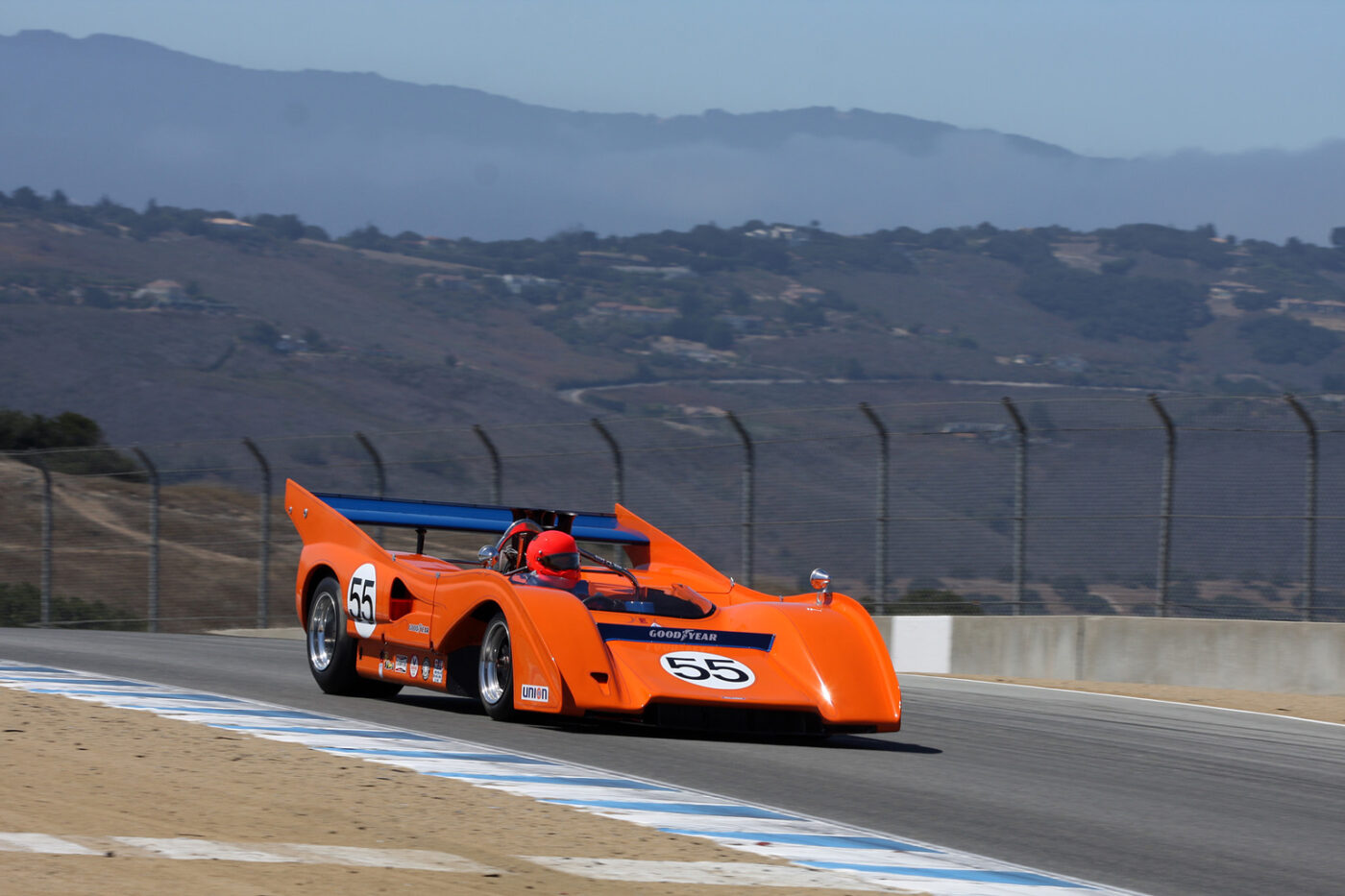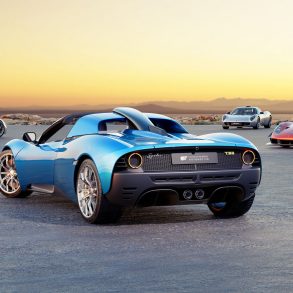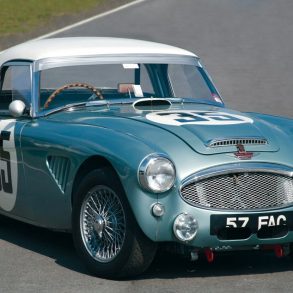McLaren M8
Robin Herd had left and was replaced by Gordon Coppuck, who had worked earlier for the National Gas Turbine Establishment, as chief designer assisted by Swiss engineer, Jo Marquardt who had worked at Lotus. It was decided early on that Coppuck would concentrate on the rear portion of the car while the Swiss, Marquardt the front. McLaren’s first mechanic, Wally Willmott left the team and moved to Australia.
The McLaren M8As when compared to last year’s car was more evolutionary than revolutionary. The main difference in the chassis was the use of the engine as a fully structural member with a subframe attached that would hold the suspension. The engine would be the ZL1 Chevy dry sump aluminum block 427. The engine was said to develop 620 hp and way approximately 360 lbs. The major difference between this year and last that would effect the team was the amount of preseason testing that was done, about 500 miles as compared to 2,000 the year before.
One evening they were unable to start the car so, still in the workshop they gave it a push while McLaren popped the clutch and laid two long black marks from the rear tire and just managed to stop the car before driving it through the opposite wall. The marks would be left on the workshop floor as a reminder of a simpler time.
Two complete M8A race cars and one spare tub were built. McLaren set up their own engine department in England which was led by American George Bolthoff formerly of Traco Engineering. After every race the engines were shipped of to the factory in Colnbrook where they would be serviced before being sent back across the Atlantic. McLaren’s main US base during this period was inside the Smith Ford dealership in Norwich, NY. while during the California races they would utilize Steve McQeen’s workshops in Van Nuys, CA.
For the 1969 Can-Am season a M8B version was developed. The most noticeable difference was that a new high rear wing was now included like the Chaparral 2E. The wing mounting passed through the bodywork to attach directly to the suspension uprights. The body was also widened in order to fit one inch wider wheels, now 15 x 11 front and 15 x 16 rear. The engine was a shorter stroke, larger bore version of last year’s 1968 engine 630bhp. McLaren made a point of using as many parts from last year’s model as possible. In an expanded 11-race season it took 11 poles and 11 wins, shared between Bruce himself (six plus the title) and Denny (five). A customer version, the M8C was offered by Trojan.They featured a more conventional chassis that did not use the engine as a stressed member, giving the customers more freedom in choosing an engine.
The M8D was developed for the 1970 Can-Am season. The high mounted rear wings were now banned in Can-Am, so the M8D’s rear wing was mounted low on fins, earning the car the nickname “Batmobile”. Frank Williams of F1 fame met with William G Reynolds to discuss potential sponsorship when he learned from the head of the Reynolds Aluminum company of a new all-aluminum Chevy V-8 engine block that they were working on. Realizing that while not something he could use in F1 may be just the ticket for his friend at McLaren. Sensing a possible commission opportunity he put the Reynolds in contact with Bruce McLaren. A new deal with Reynolds saw McLaren join the “Rat Patrol” (Reynolds Automotive Team) giving them access to the company’s new silicon-aluminum Chevrolet V-8 engine blocks. A 8-litre version which were said to be capable of producing 700bhp was available but in the interest of reliability a slightly smaller 7.6-litre block was chosen. The Chevrolet V8 at 7,620 cc (465 cu in) produced 670 bhp. It was further developed by George Bolthoff before he left to set up his own business. Gary Knutson would return to McLaren and replace Boltoff. A M8E customer version chassis was offered by Trojan.
The M8F built for the 1971 Can-Am season now featured an 8-liter Chevrolet V8 that produce 740 bhp which made the M8F the first Can-Am race car to break the 1000 bhp/ton mark. The fins of the M8D were now starting at the tip of the front fenders of the M8F. In 1972 the ‘Batmobile’ finally became available to customers.














